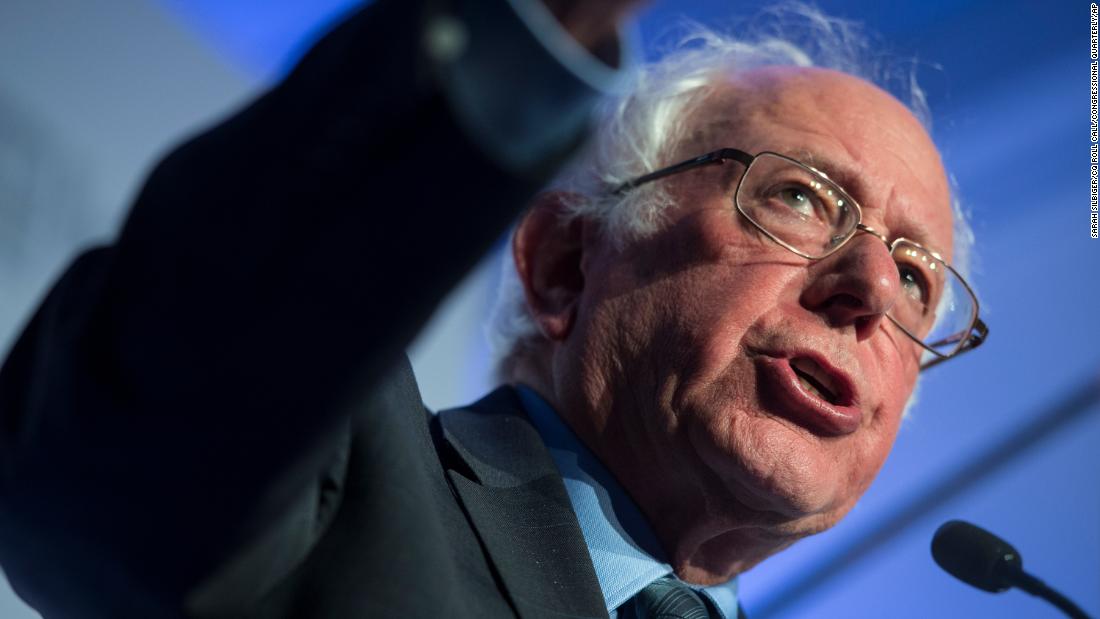Bernie Sanders lost in 2016. Here’s what he needs to do to win in 2020.

Sanders, who announced Tuesday he’s running for president in 2020, starts off in a very different position than he did four years ago, when he was considered a long shot. He has near universal name recognition and is in clear second place to former Vice President Joe Biden in the polls. But to build on his current poll support and improve upon his 2016 performance, Sanders will need to expand on his base and do better in at least five areas. 1. Black voters If you were to pinpoint one reason Sanders lost in 2016, it was his inability to make inroads into this important part of the Democratic base. Hillary Clinton beat Sanders by about 57 points among black voters in the average of states with an exit poll, which is a devastating margin when you recognize black voters make up about 20% of the Democratic base. A repeat performance from Sanders among them would almost certainly doom his candidacy from the start. That’s why Sanders is making outreach to black voters a top priority for 2020. 2. DemocratsNot surprisingly, the independent senator did best among voters who identified as independents. He won them by about 29 points in the average primary with an exit poll. The problem is that Sanders did poorly with self-identified Democrats. He lost them by about 27 points in 2016. That math just doesn’t work out for Sanders because self-identified Democrats outnumbered self-identified independents by a 3:1 margin in 2016 Democratic primaries. The good news for Sanders is independents will likely be a larger proportion of the 2020 electorate, if the Republican primary is uncompetitive. Still, Sanders has to realize this is a Democratic primary in order to have a real shot of winning. Labels matter. 3. Older voters Sanders was the candidate of young voters in 2016. Among those under 45 years old, he won an impressive 19-point margin in the average primary with an exit poll. If Sanders does even better among young voters, it would definitely smooth a pathway to victory in 2020. Even so, those under 45 years old are the minority of primary voters. Democrats who are 45 years old and older made up about 60% of Democratic primary voters in 2020. Sanders lost them by 33 points in the average primary in 2016. He’ll likely have to improve with older voters in his second run. That won’t be easy given that older Democrats have traditionally been more moderate and therefore less receptive to a self-described Democratic Socialist. 4. Women voters The 2016 primary featured a gender gap normally seen in general elections. Sanders lost men voters by only 2 points in the average state with an exit poll. (He actually won them by 1 in the median state.) A primary among just men voters would have gone down to the wire in 2016. Unfortunately for Sanders, he lost women by 22 points in the average state. Women made up about 58% of Democratic primary voters in the average state in 2016.The question is whether Sanders can do better with women the second time around. He might have the opportunity to since he isn’t running against a candidate who is trying to be the first woman major party presidential nominee in American history. Of course, Clinton didn’t win the general election and the desire to see the first woman president may be quite strong in 2020, especially with six women already in the race. Either way, Sanders is either going to have to be much stronger with men or try to close the gender gap to be competitive in 2020. 5. Very liberal voters Sanders has made his bones as being the most liberal candidate in a party that is running left. Yet, the best he could do was fight Clinton to a tie among self-identified very liberal voters in 2016. To win in 2020, he’ll probably need to run up the score with very liberal voters in a way he didn’t in 2016. The good news for Sanders is the Democratic Party is becoming more liberal. Very liberal voters made up 25% of primary voters in 2016, and they could be an even larger percentage in 2020. With so many candidates running, Sanders could win pluralities overall with a large win among very liberal Democratic primary voters.


